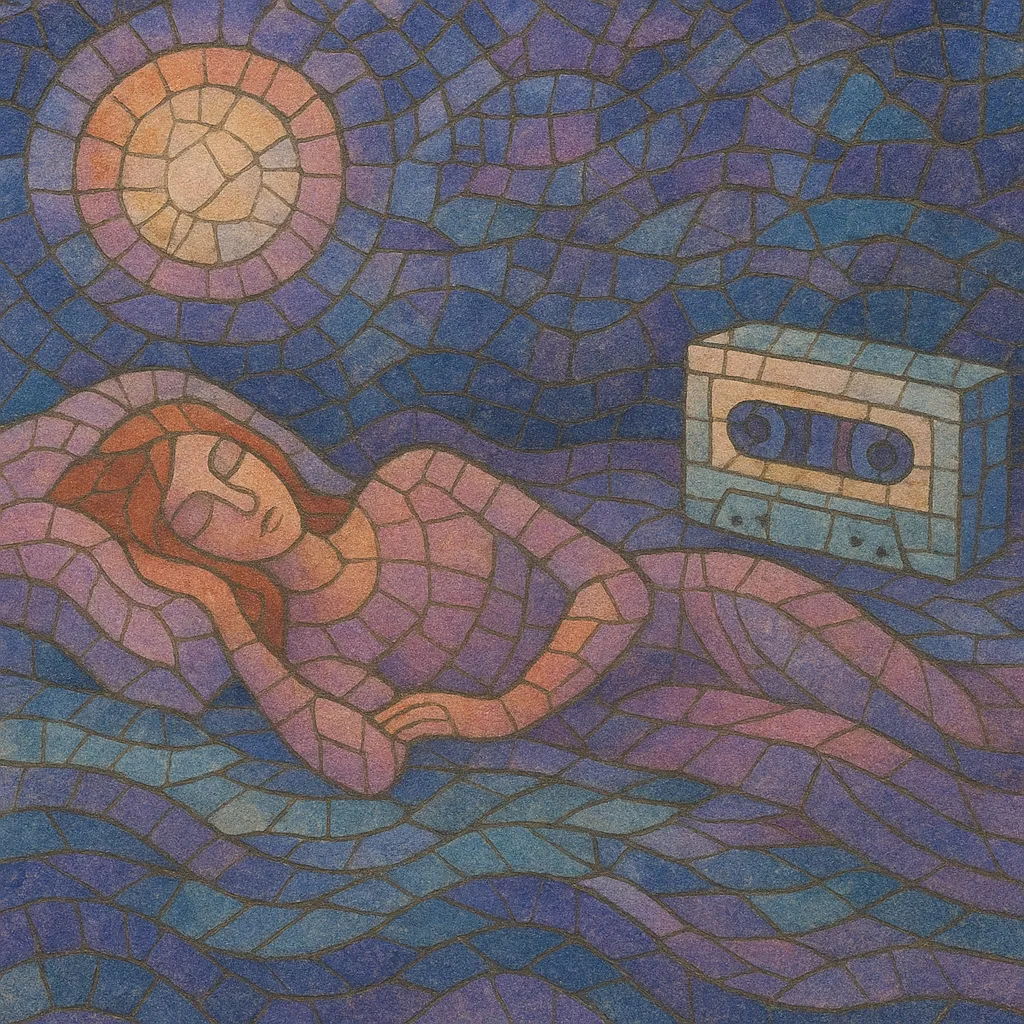
Hypnagogic pop is a late‑2000s microgenre of lo‑fi pop that evokes the hazy, half‑awake feeling between sleep and consciousness. Artists fold fragments of 1970s–1990s mass‑media memory—VHS textures, TV idents, soft rock hooks, and mall‑era synths—into dreamy songs obscured by tape hiss, reverb, and analog wobble.
The style blends retro synth-pop, yacht/soft rock, new age pads, and ambient drift with indie pop songcraft. Its mood is nostalgic and melancholic yet warmly intimate, as if hearing familiar pop refracted through worn cassettes and fading broadcast signals.
The term “hypnagogic pop” was popularized in 2009 (notably in The Wire) to describe a wave of U.S. underground artists who reanimated memories of 1980s–1990s consumer pop culture through lo‑fi aesthetics. Early touchstones included Ariel Pink’s Haunted Graffiti’s home‑taped pop (e.g., The Doldrums), James Ferraro’s warped Americana and media detritus, and Daniel Lopatin’s (Oneohtrix Point Never) synth nostalgia and found‑media collages. Small labels and cassette culture—Olde English Spelling Bee, Not Not Fun, and others—provided the scene’s infrastructure.
Rather than simple retro revivalism, hypnagogic pop reframed the past as dream‑objects. Artists used degraded media (cassettes, VHS rips), woozy chorus and reverb, and FM/analog synth timbres to blur melody and memory. Pop hooks, soft rock harmonies, and new age pads were filtered through ambient haze and psychedelic drift, producing songs that sounded like transmissions from a fading broadcast era.
Around 2010–2012, the style gained visibility as releases by James Ferraro, OPN (including the Chuck Person “Eccojams” project), Rangers, Ducktails, and Nite Jewel circulated through blogs and online forums. The label “hypnagogic” drew debate, but the music’s strategies seeded adjacent internet microgenres: eccojams and vaporwave (looped, detuned pop fragments), chillwave’s sun‑bleached indie electronics, and later dreampunk and “utopian virtual.” While the tag faded, its aesthetic—nostalgic media patina and blurred pop memory—remains influential across experimental pop and online scenes.
Use a blend of analog or emulated vintage synths (Juno/Jupiter, DX7/FM tones), chorus‑soaked guitars, and warm, woozy pads. Add tape hiss, vinyl crackle, and subtle VHS/warble plugins to simulate degraded media. Favor spring/plate reverbs and gentle tape delay to blur edges.
Write simple, catchy pop progressions colored by soft‑rock and new‑age voicings (maj7, min7, add9, IV–V–I, I–vi–IV–V). Melodies should feel half‑remembered—use repeating motifs, parallel thirds, and occasional detuned doubles to create a dreamlike wobble.
Keep tempos moderate (70–110 BPM). Use drum machines with lightly gated snares and subdued kicks. Program understated, loop‑friendly patterns; allow swing and slight timing drift to suggest worn tape or human imperfection.
Track to cassette or use tape emulations; introduce wow/flutter and gentle saturation. Sidechain subtly to glue pads and bass. Low‑pass and soften transients to avoid modern sheen. Layer short media snippets (radio/TV ephemera) tastefully to evoke memory without overwhelming the song.
Place vocals slightly back in the mix with reverb and light chorus. Use intimate, conversational delivery; falsetto or doubled whispers can enhance the “hypnagogic” feel. Write lyrics about memory, suburbia, late‑night TV, malls, or faded relationships—concrete images that read like fragments.
Favor short forms (2–3 minutes) with loopable sections and gradual textural shifts. Introduce/remix motifs like they’re being recalled, not newly stated. Allow ambient intros/outros and interludes that feel like channel changes.

